Cargando...
Recursos educativos
-
Nivel educativo
-
Competencias
-
Tipología
-
Idioma
-
Tipo de medio
-
Tipo de actividad
-
Destinatarios
-
Tipo de audiencia
-
Creador
Lo más buscado
- Divisiones para imprimir
- La industria alimentaria
- Capitales de Oceanía
- Letras P
- juegos de matemáticas para niños
- Reported speech
- Alteración del lenguaje
- Aprender las letras
- Clasificación de triángulos
- problemas de primaria
- Creative writing
- El Egeo y Persia
- Mapa de España
- Juegos navideños
- juegos matemáticas
-
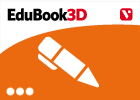
Analyse. Life cycle of a frog
EduBook Organización
- 2542 visitas
Look at the life cycle of the frog and answer the questions: Why do amphibians lay their eggs in water? What kind of respiration does a tadpole have during the first nine days of life? When does a…
-

Initial evaluation 04 - Animal reproduction
EduBook Organización
- 2460 visitas
Complete the sentences with the correct words: In most animals there is a male and a . Animals which are born from a mother are called . Animals which are hatched from an egg are called . To become…
-
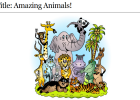
Webquest: Amazing animals
Tiching explorer Organización
- 3158 visitas
This webquest is designed to help us classify animals (mammals, fish, birds, amphibians, and reptiles) and build their schema. We do an online research to find information on each animal classification…
-
Final self-evaluation 07 - Animal reproduction
EduBook Organización
- 2285 visitas
Decide if the following statements are true or false: The length of gestation is the same for every species. ➝ The shells of eggs allow them to dry. ➝ Birds look after their young after birth. ➝…
-
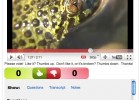
Video: Frog Life Cycle
Esl video Organización
- 2191 visitas
This 2 minute video explains the stages in the development of a frog: an egg, a tadpole and finally an adult frogs. Children learn to distinguish amphibians, they can see their environment and their…
-
Before you start - The Animal Kingdom (II). Vertebrates
EduBook Organización
- 1948 visitas
Didactic objectives To know the general morphological characteristics of vertebrates and the groups included. Compare, differentiate and describe various specimens of fish, amphibians, reptiles,birds…
-

True/false. Characteristics of vertebrates
EduBook Organización
- 3956 visitas
Decide if the following sentences are true or false: Vertebrates are the largest animal group on Earth. ➝ Almost all vertebrates have limbs. ➝ Limbs are called wings when they are used for flying.…
-
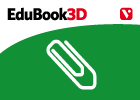
The five groups of vertebrates
EduBook Organización
- 3943 visitas
Fish have an elongated body and swim using their fins. Amphibians live part of their life in water. Their skin is moist and slippery. Reptiles crawl to move around. Their bodies are covered with hard…
-
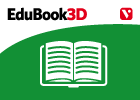
Summaries - Animals
EduBook Organización
- 2282 visitas
1. Vertebrates Vertebrates are the group which contains the human species. They have an internal skeleton, made of bones. The name comes from the vertebrae, which make up the spine (backbone), which…
-

Comprehension check (PET)
EduBook Organización
- 2236 visitas
Read these sentences about Chapter Eight. Decide if each sentence is correct or incorrect. Hans managed to save only the food from the water. Axel and his uncle found some shells of prehistoric…
Te estamos redirigiendo a la ficha del libro...












